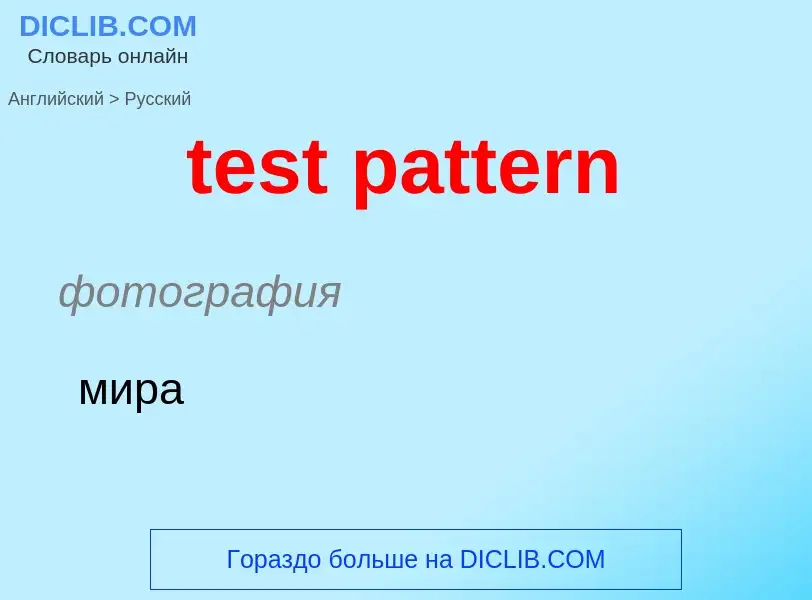Translation and analysis of words by ChatGPT artificial intelligence
On this page you can get a detailed analysis of a word or phrase, produced by the best artificial intelligence technology to date:
- how the word is used
- frequency of use
- it is used more often in oral or written speech
- word translation options
- usage examples (several phrases with translation)
- etymology
test pattern - translation to russian
фотография
мира
Definition
Wikipedia
A test card, also known as a test pattern or start-up/closedown test, is a television test signal, typically broadcast at times when the transmitter is active but no program is being broadcast (often at sign-on and sign-off).
Used since the earliest TV broadcasts, test cards were originally physical cards at which a television camera was pointed, allowing for simple adjustments of picture quality. Such cards are still often used for calibration, alignment, and matching of cameras and camcorders. From the 1950s, test card images were built into monoscope tubes which freed up the use of TV cameras which would otherwise have to be rotated to continuously broadcast physical test cards during downtime hours.
Electronically generated test patterns, used for calibrating or troubleshooting the downstream signal path, were introduced in the late-1960s. These are generated by test signal generators, which do not depend on the correct configuration (and presence) of a camera, and can also test for additional parameters such as correct color decoding, sync, frames per second, and frequency response. These patterns are specially tailored to be used in conjunction with devices such as a vectorscope, allowing precise adjustments of image equipment.
The audio broadcast while test cards are shown is typically a sine wave tone, radio (if associated or affiliated with the television channel) or music (usually instrumental, though some also broadcast with jazz or popular music).
Digitally generated cards came later, associated with digital television, and add a few features specific of digital signals, like checking for error correction, chroma subsampling, aspect ratio signaling, surround sound, etc. More recently, the use of test cards has also expanded beyond television to other digital displays such as large LED walls and video projectors.

![The famous RCA [[Indian-head test pattern]] used mainly in North America from 1940 to the 1970s with its elements labelled, describing the use of each element in aligning a black & white analog TV receiver. The famous RCA [[Indian-head test pattern]] used mainly in North America from 1940 to the 1970s with its elements labelled, describing the use of each element in aligning a black & white analog TV receiver.](https://commons.wikimedia.org/wiki/Special:FilePath/Indian Head Test Pattern with Labels.png?width=200)
![819-line]] tv system. 819-line]] tv system.](https://commons.wikimedia.org/wiki/Special:FilePath/RTF Test card 819-lines 1953.jpg?width=200)
![A 1952 Philips TD1410U television set showing the optical monochrome [[Telefunken T05]] test card. A 1952 Philips TD1410U television set showing the optical monochrome [[Telefunken T05]] test card.](https://commons.wikimedia.org/wiki/Special:FilePath/SW Testbild auf Philips TD1410U.jpg?width=200)
![Links web browser]] since 2001 Links web browser]] since 2001](https://commons.wikimedia.org/wiki/Special:FilePath/TwibrightLinksTestCard.png?width=200)
![A [[monoscope]]. A [[monoscope]].](https://commons.wikimedia.org/wiki/Special:FilePath/Monoscope.jpg?width=200)

